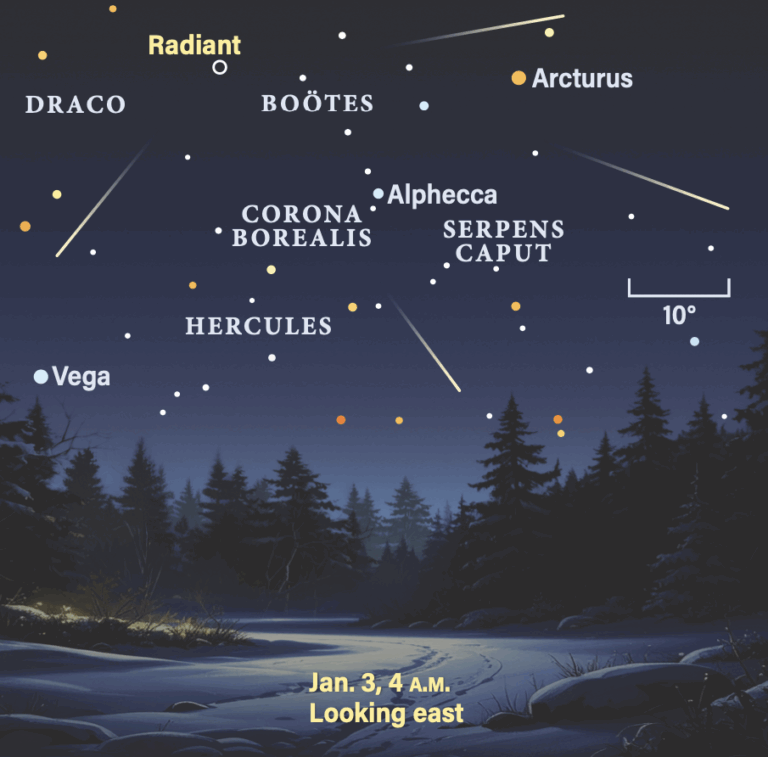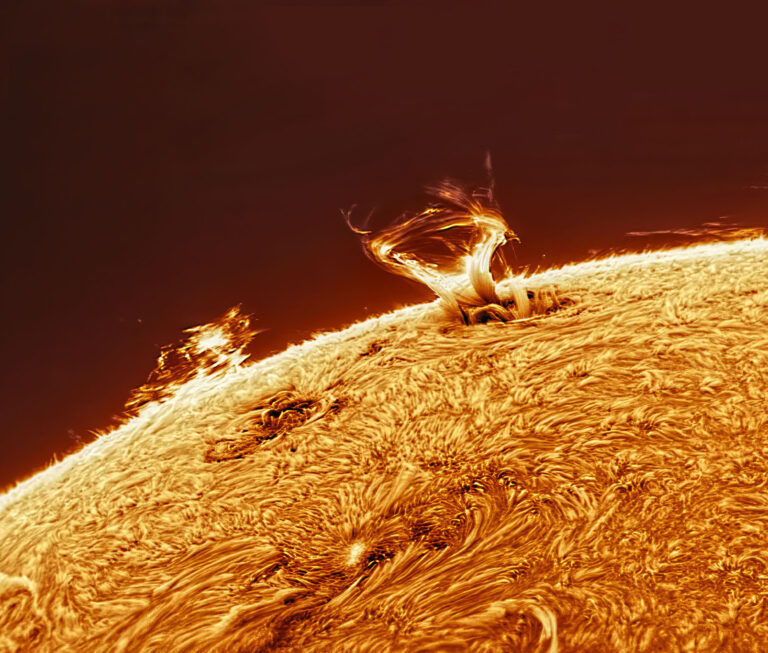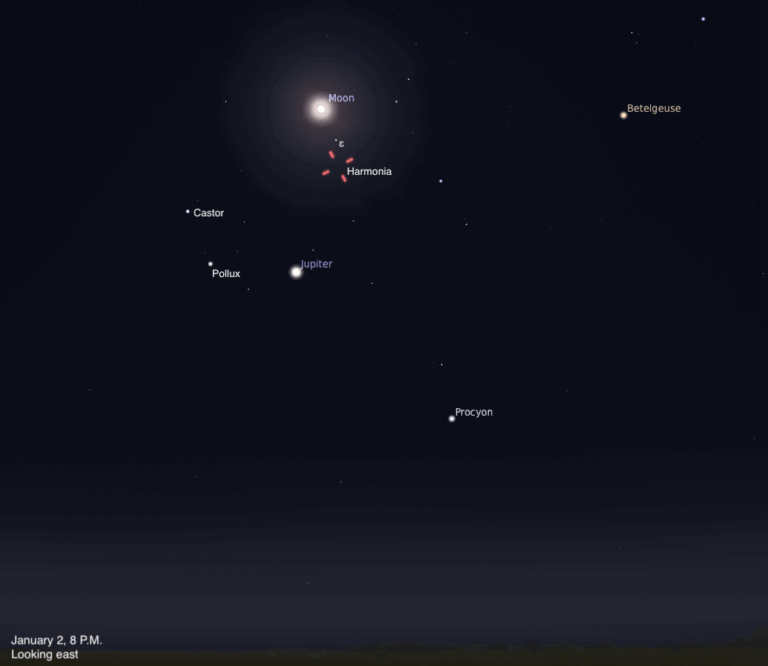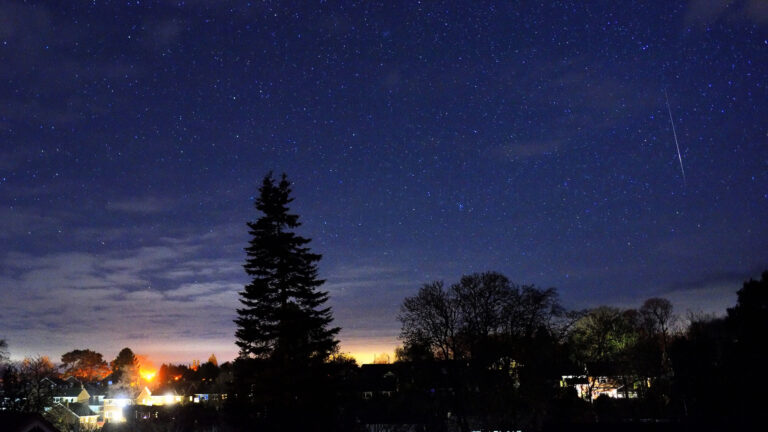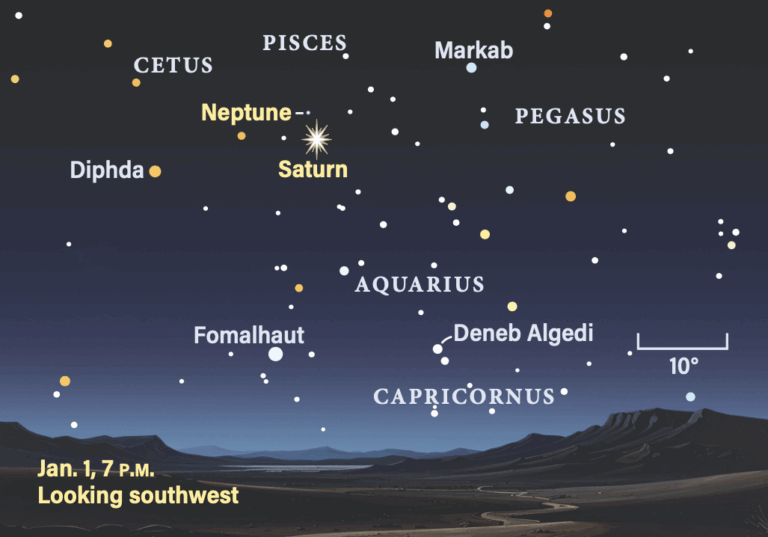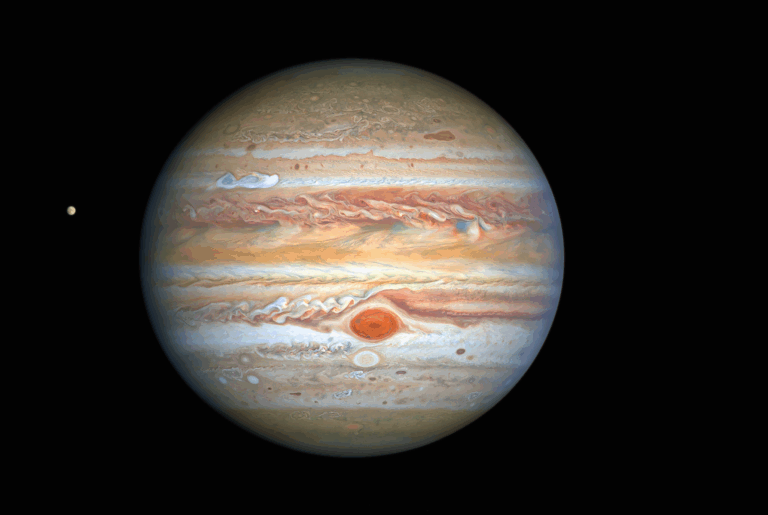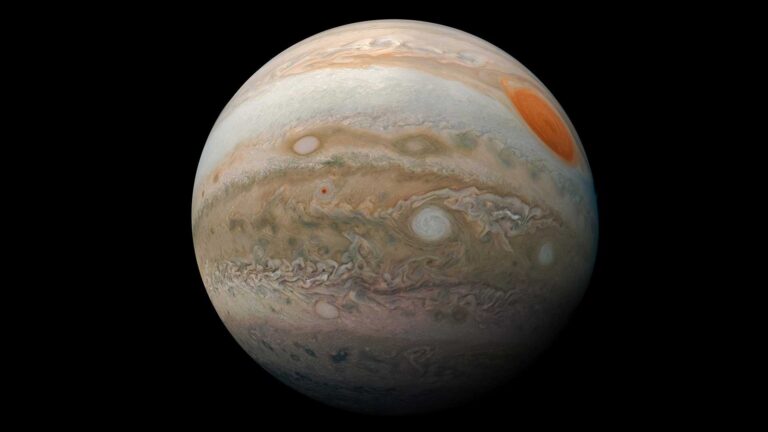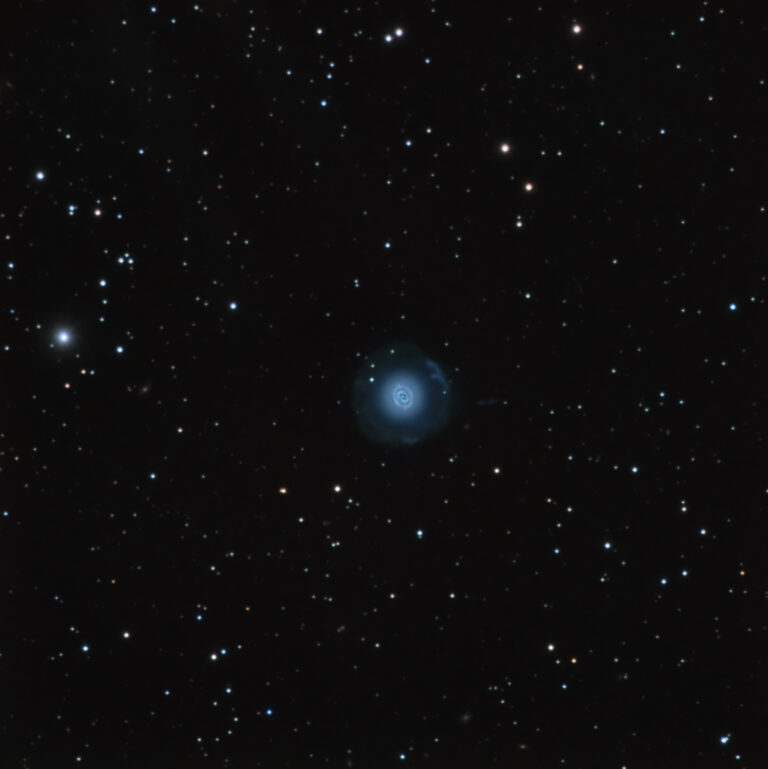Key Takeaways:
Dwarf planet 1 Ceres is the largest object in the asteroid belt, which lies between the orbits of Mars and Jupiter. It currently resides in western Leo, which appears high in the west after twilight fades to darkness. The magnitude 8.5 dwarf planet is easy to spot through binoculars or a telescope, particularly when it slides past magnitude 4.5 Kappa (κ) Leonis this evening. Point your scope at Kappa and then look for a magnitude 6.8 star half the Full Moon’s diameter to the south-southwest. Ceres lies between these two and slightly closer to Kappa.
Saturday, May 19
Mars rises around 1 a.m. local daylight time and climbs nearly 25° high in the south-southeast by the time twilight commences. Although it is still more than two months away from its late July opposition, the Red Planet appears noticeably brighter than it did just a week ago. Shining at magnitude –0.9 this morning, it is the second-brightest point of light in the morning sky after Jupiter. If you point a telescope toward Mars this morning, you’ll see a 13″-diameter disk that sports several subtle surface features.
Venus crossed the border from Taurus the Bull into Gemini the Twins yesterday, and tonight it slides less than 1° north of the 5th-magnitude open star cluster M35. Binoculars or a telescope at low power will provide the best view of this pretty conjunction, especially once the sky grows dark around 10 p.m. local daylight time. The brightness disparity between the two objects is quite impressive: Venus appears some 4,000 times brighter than the combined glow from all the cluster’s distant suns. A telescope also reveals Venus’ disk, which spans 12″ and appears 83 percent lit.
Monday, May 21
The First Quarter Moon hangs high in the southwest as darkness falls, then sinks steadily toward the western horizon throughout the evening hours. Our satellite officially reaches its First Quarter phase at 11:49 p.m. EDT. The Moon lies in the constellation Leo, about 1° north of 1st-magnitude Regulus. From North America, the two objects appear closest in the early evening sky.
Tuesday, May 22
Jupiter reached opposition and peak visibility two weeks ago, and it remains a stunning sight all night. It appears low in the southeast during evening twilight and climbs highest in the south around midnight local daylight time. Shining at magnitude –2.5, the giant planet is the night sky’s brightest point of light once Venus sets shortly before 11 p.m. Jupiter resides among the background stars of Libra, 1.6° east-northeast of Zubenelgenubi (Alpha [α] Librae). When viewed through a telescope, the gas giant’s disk spans 45″ and shows a wealth of detail in its cloud tops.
The Summer Triangle asterism dominates the eastern sky in late evening. Vega, the triangle’s brightest member, shines at magnitude 0.0 and stands highest of the three stars. To its lower left lies Deneb; at magnitude 1.3, it’s the faintest of the trio. Magnitude 0.8 Altair completes the bright asterism. Despite its name, the Summer Triangle appears prominent from late spring until the onset of winter.
Thursday, May 24
Neptune rises around 2:30 a.m. local daylight time and appears about 15° high in the east-southeast as twilight commences. The distant world glows at magnitude 7.9, so you’ll need binoculars or a telescope to spot it. Fortunately, it lies near a brighter star that will guide you. This morning, Neptune stands 1.1° west-southwest of 4th-magnitude Phi (φ) Aquarii. You can confirm your sighting of Neptune through a telescope, which reveals the planet’s 2.3″-diameter disk and blue-gray color.
Friday, May 25
Look high in the northwest after darkness falls this week and you’ll be greeted by the familiar sight of the Big Dipper. The Dipper is the sky’s most conspicuous asterism — a recognizable pattern of stars that doesn’t form a complete constellation shape. It makes up the body and tail of Ursa Major the Great Bear. Use the Pointers, the two stars at the end of the Dipper’s bowl, to find Polaris, which lies due north for everyone north of the equator. Polaris marks the end of the Little Dipper’s handle. On evenings in late May, the relatively faint stars of this dipper arc directly above Polaris.
Although Saturn won’t reach opposition and peak visibility for another month, observers will be hard-pressed to see it as inferior this week. The ringed planet rises around 10:30 p.m. local daylight time and appears highest in the south around 3 a.m. Saturn shines at magnitude 0.2 and stands out against the background stars of northern Sagittarius. If you target the beautiful world through a telescope, you’ll see its 18″-diameter disk surrounded by a ring system that spans 41″ and tilts 26° to our line of sight.
Sunday, May 27
The waxing gibbous Moon appears near brilliant Jupiter all night. The two were closest during the afternoon hours from North America (when they were below the horizon), and they slowly pull apart as the night progresses. Still, they make a pretty pair set against the backdrop of Libra the Scales.





